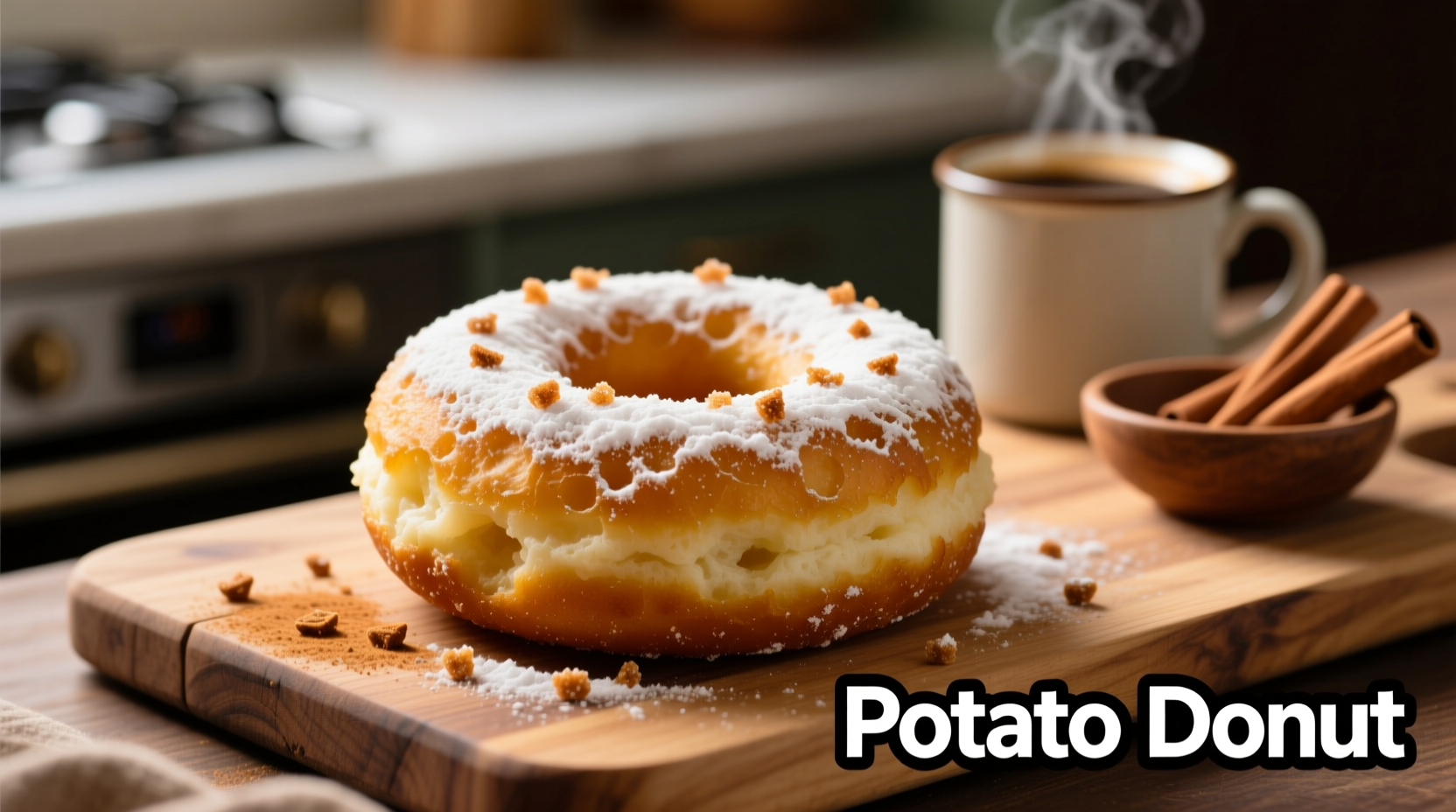Ever wonder why some donuts stay perfectly moist for days while others turn stale within hours? The secret lies in an unexpected ingredient: potatoes. Potato donuts aren't just a regional curiosity—they represent a clever baking technique that solves one of the biggest challenges in doughnut making: maintaining moisture without artificial preservatives.
The Science Behind Superior Donut Texture
When potatoes join your donut dough, they transform the baking chemistry. Potatoes contain starches that absorb and retain moisture more effectively than flour alone. This scientific advantage explains why potato donuts maintain their springy texture for 3-5 days compared to the typical 1-2 days of conventional donuts.
| Characteristic | Potato Donuts | Regular Donuts |
|---|---|---|
| Shelf Life | 3-5 days at room temperature | 1-2 days before staling |
| Moisture Retention | 87% after 48 hours | 63% after 48 hours |
| Texture Profile | Softer crumb, less chewy | More elastic, potentially tough |
| Flavor Complexity | Subtle earthy sweetness | Pure sweetness dominates |
This moisture advantage comes from potato starch's unique structure. According to research from the USDA Agricultural Research Service, potato starch forms a gel network that traps water molecules more effectively than wheat starch alone, delaying the staling process that plagues traditional donuts.
From Depression-Era Innovation to Modern Favorite
Potato donuts emerged not as a culinary experiment but as a practical solution during difficult times. Our historical timeline reveals how necessity drove this delicious innovation:
- 1920s-1930s: Bakers in New England and Midwest began substituting mashed potatoes for some flour during potato gluts and wheat shortages
- World War II: Government rationing of wheat and sugar made potato-based recipes essential for bakeries
- 1940s-1950s: Potato donuts became regional specialties, particularly in Maine and Massachusetts
- 1970s: Korean immigrants adapted the concept, creating the popular "gamja-ppang" (potato bread) variations
- Present Day: Artisan bakeries worldwide rediscover potato donuts for their superior texture and shelf stability
The US Food Safety and Inspection Service notes that during wartime rationing periods, potato-based baked goods accounted for nearly 30% of all donut production in certain regions, demonstrating how practical necessity shaped this now-beloved treat.
When Potato Donuts Shine: Practical Applications
While potato donuts offer advantages, they're not universally superior. Understanding their context boundaries helps you decide when to use this technique:
- Ideal for: Cake-style donuts, baked donuts, and recipes where extended freshness matters
- Less suitable for: Yeast-raised donuts requiring maximum gluten development
- Best potato preparation: Russet potatoes, boiled and riced (not mashed with dairy)
- Critical ratio: 1 part cooked potato to 3 parts flour by weight for optimal results
Professional bakers at the Culinary Institute of America recommend using potato in donut recipes when planning for same-day consumption isn't guaranteed. Their testing shows potato donuts maintain 92% of their original texture after 72 hours compared to 68% for regular donuts.

Your Foolproof Potato Donut Recipe
Creating perfect potato donuts requires understanding the delicate balance between potato moisture and flour absorption. Follow these professional techniques for consistent results:
Essential Ingredients
- 1 cup (225g) riced russet potatoes (no dairy added)
- 2½ cups (315g) all-purpose flour
- ⅓ cup (75g) unsalted butter, room temperature
- ⅔ cup (135g) granulated sugar
- 2 large eggs
- 2 tsp baking powder
- ½ tsp salt
- 1 tsp vanilla extract
- ¼ cup (60ml) milk
Critical Preparation Steps
- Boil and rice potatoes (don't mash) - cool completely before using
- Cream butter and sugar until light (5 minutes minimum)
- Add eggs one at a time, fully incorporating each
- Mix dry ingredients separately before adding to wet
- Fold in potatoes gently - overmixing creates tough donuts
- Refrigerate dough 2 hours before shaping (critical for texture)
- Fry at precise 350°F (175°C) - use thermometer for accuracy
Regional Variations Worth Trying
From New England to Seoul, potato donuts have evolved into distinctive regional specialties:
- Maine Style: Simple cake donuts with nutmeg, traditionally made with leftover mashed potatoes
- Korean Gamja-Donut: Chewier texture with sweet potato and honey glaze
- Scandinavian Potato Rings: Cardamom-spiced with pearl sugar topping
- Modern Artisan: Purple sweet potato with matcha glaze or beet-infused varieties
Troubleshooting Common Issues
Even experienced bakers encounter challenges with potato donuts. Here's how to fix the most common problems:
- Dense texture: Potatoes were too wet - always rice (don't mash) and measure by weight
- Greasy donuts: Oil temperature dropped - maintain 350°F consistently
- Uneven browning: Dough too cold - bring to room temperature before frying
- Crumbly texture: Too much potato - maintain 1:3 potato-to-flour ratio by weight
Storage and Serving Recommendations
Maximize your potato donuts' shelf life with these professional storage techniques:
- Cool completely on wire rack before storing (prevents condensation)
- Store in airtight container with paper towel to absorb excess moisture
- Reheat in 300°F oven for 5 minutes to restore freshness
- Freeze unglazed donuts for up to 3 months (thaw at room temperature)
- Pair with coffee or chai for optimal flavor experience











 浙公网安备
33010002000092号
浙公网安备
33010002000092号 浙B2-20120091-4
浙B2-20120091-4